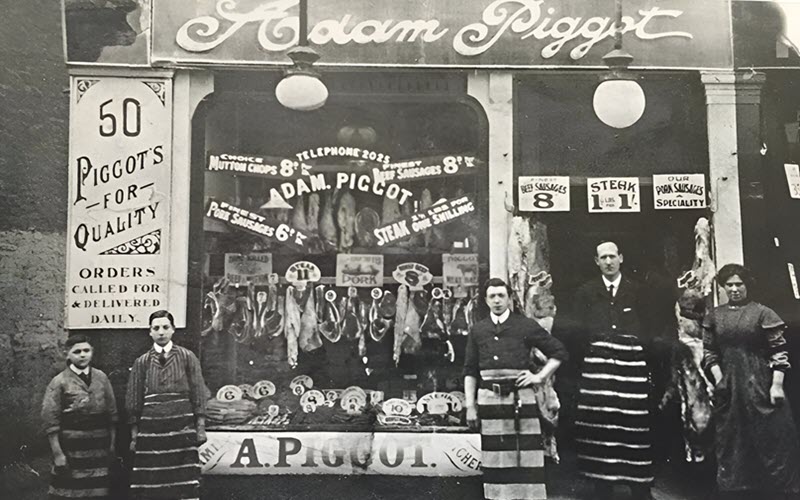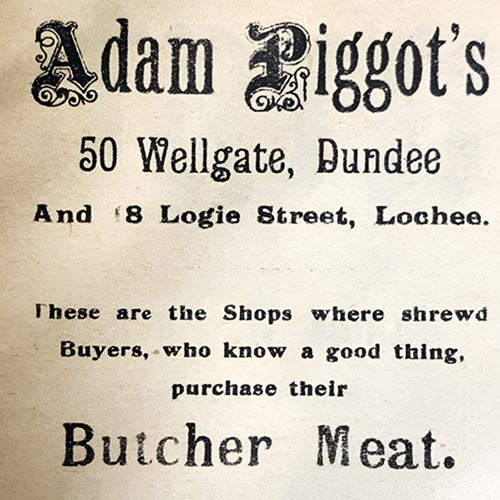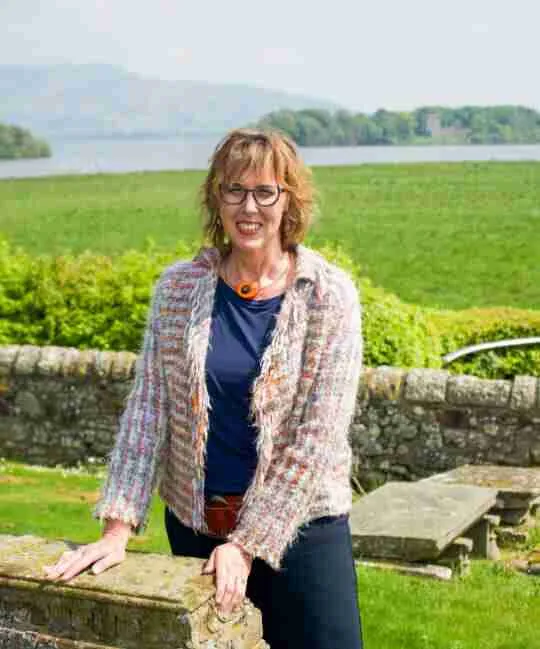Learning about your butcher family history shows what life was like in one of Scotland’s oldest jobs. This article, part of my series on old occupations, explores daily life, skill, and family tradition.
Fleshmarkets and Butchers’ Rows
From medieval times, most Scottish burghs had streets specifically for butchers, known as Fleshmarkets. These were often noisy, busy streets where meat was sold at market stalls, and where butchers also lived and worked. Behind their homes were slaughterhouses or “fleshers’ booths,” while the front windows were fitted with broad wooden ledges to display meat.
Edinburgh’s Fleshmarket Close was once lined with butchers’ stalls, while The Flesh Market once stood near the Castlegate in Aberdeen. Perth, Stirling, and Dundee each had similar areas — Fleshers’ Vennel, Fleshmarket Street, or Butchers’ Row — all reminders of the old occupation.
The Local Butcher and Everyday Life
No matter where you grew up, the one shop everyone remembers is the local butcher’s. Before the arrival of supermarkets, every town and many villages had their own independent butcher. In fact, it was not uncommon for a Scottish town to have between five and eight butchers competing for trade.
Each had a distinctive product or recipe that kept customers loyal. Butchers often knew their customers by name and would set aside particular cuts or bones for a family’s weekly broth.
Inside these premises, sawdust was spread across the floor to absorb spilt blood, and heavy carcasses of beef, mutton, or pork hung from large iron hooks. Without modern refrigeration, meat was stored in a cool basement or an ice box if they had one. It was the only way to keep the meat fresh.
Because of the ample supply of meat and the physical demands of the job, it was rare to find a thin butcher.
Dress to Impress
Competition for customers was fierce, and butchers relied on both skill and presentation to attract business. Their shops were designed to impress with the finest carcasses hung outside the shop. Today we would be horrified by the open displays of unrefrigerated meat, the sawdust-covered floors, and the bloodied cleavers. Yet these were once signs of craftsmanship and respectability. It was proof that the butcher worked with the freshest produce and took pride in his trade.
Training and Apprenticeship in Butcher Family History
The butchery business was often handed down from father to son. Becoming a butcher required years of hands-on training. Young boys entered a traditional seven-year apprenticeship under the supervision of a master butcher. On completion, they became journeymen butchers, qualified to work for wages or to set up a business of their own.
In Scotland’s burghs, many butchers were members of local trade incorporations, known as the Incorporation of Fleshers. These bodies regulated the quality of meat, ensured fair prices, and set out the rules of apprenticeship.
Surviving records of these incorporations can be found in local archives.
The Changing Trade
By the late nineteenth century, the nature of butchery began to shift. Public health laws brought higher standards of cleanliness, and many towns established centralised slaughterhouses. Hygiene and presentation transformed how meat was sold.
Marble counters, gleaming tiles, and windows filled with beef and lamb joints became the hallmarks of the more upmarket butcher’s shop. Calling themselves purveyors of meat, this new generation of butchers sought to distance themselves from the blood and bustle of the old fleshmarkets. They catered to middle-class customers who valued quality, cleanliness, and refinement.
Researching Your Butcher Family History
If you have identified a butcher among your Scottish ancestors, several records can reveal more about their working life and your butcher family history:
- Census records (1841–1921) & registers: list occupations such as “butcher,” “flesher,” or “journeyman flesher.”
- Trade directories: name butchers operating in towns and villages, often with business addresses.
- Guild and incorporation records: provide details of apprenticeships and membership.
- Valuation rolls and sasines: may record property ownership of shops or slaughterhouses.
- Wills and inventories: can list tools, stock, and debts, offering a glimpse into the scale of the business.
- Newspapers: often reported market prices, business advertisements, or legal disputes involving local butchers.
Advert from 1911 Scottish Prohibitionist Newspaper (Dundee Libraries)
Bringing Their Story to Life
Tracing your butcher family history provides a vivid link to Scotland’s social and economic past. You can still visit old streets in Scotland such as Perth, Stirling, or Edinburgh, where the street names remind you of their original purpose.
For me, this trade is more than a historical subject. My grandmother worked in a butcher’s shop in the 1940s to help feed her family during wartime.
Good luck with your research.
Until my next post, haste ye back.
Enjoyed this post?
Keep up-to-date with my latest posts and tips below:
We hate SPAM & promise to keep your details safe.
Image credits: Dundee Library
You may also like...
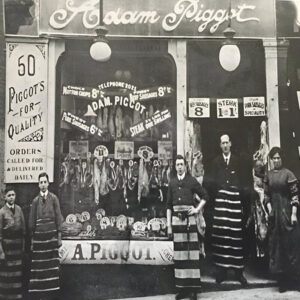
Butcher Family History: My Ancestor Was a Butcher
Learn about your butcher family history and find out what life was like for butchers in Scotland’s towns and villages.
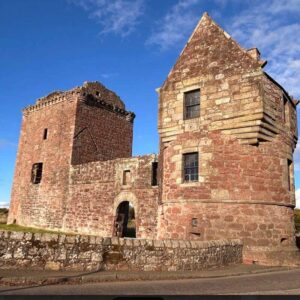
The Balfour Surname – Meaning and History
The Balfour surname is Scottish, found in Orkney, Aberdeen-shire, Angus and Fife. It is a place-name meaning “farm by the pasture.”
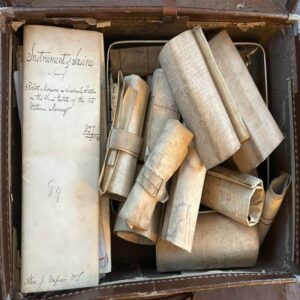
Unlocking Family Tree Secrets
A family tree was brought to life by an old suitcase revealing links to Balvaird Castle, Murrayshall and Scone Palace.
